It’s a tough pill to swallow, for many, dealing with and accepting the truth of hearing loss. Nonetheless, you pushed on and went to a hearing specialist for a hearing aid fitting appointment, because you knew that’s what is best for your health. More than likely, you quickly realized the benefits one receives from wearing a hearing aid, including the ability to hear speech (even among the buzz of background noise), the potential to recover from mental decline and the ability to deal with tinnitus.
But on occasion you get a loud, piercing, shrieking negative among all the life changing advantages. You get a loud whistling sound from your hearing aids. Feedback is the more familiar word for this whistling. It’s just like what happens to a sound system when you bring a microphone too close, but it’s directly in your ears. Fortunately, this is a problem you can correct relatively easily. We’ve organized a recap of three tried-and-true ways to stop your hearing aid from squealing.
1. Adjust The Fit of Your Hearing Aid
The positioning of the hearing aid in your ear or the earmold it’s connected to is probably the most common reason for feedback. The sound can get out and reverberate through the microphone of the hearing aid if it doesn’t fit right. Depending on how poorly the fit is and how much sound has escaped, the outcome of the leakage can be either a continuous or an intermittent whistling. With some hearing aid designs, a plastic tube will connect the actual device with the earmold. In time, the earmold can become unseated from its proper position due to shrinking, cracking and hardening. This movement can cause squealing, but you can improve the issue by replacing the plastic piece.
2. Excessive Earwax Should be Removed
It’s ironic to think of something such as earwax, which is thought of by many people to be foul or unwelcome, as beneficial to our bodies, but it actually is. This icky compound acts as a defense against irritants such as dirt and stops them from getting into our ears. While your ears will self-regulate how much earwax you hold, through actions such as chewing or talking, there are times when a buildup of too much earwax can have negative consequences. Feedback will inevitably occur if you insert a hearing aid on top of an excessive amount of earwax. Because of the blockage from earwax, the amplified sound has nowhere to go and this is the reason for the feedback. With no clear exit, the sound circles and passes through the microphone again. Doing things including letting warm shower water run into your ears can help eliminate excessive earwax. However, the best idea could be to speak to a hearing specialist about correctly cleaning your ears to prevent excessive accumulation and subsequent whistling.
3. Make Certain The Microphone is Uncovered
Often times the most obvious solution is the most effective. How many times have you seen someone try to take a photo with the lens cap on their camera and watched as they became temporarily perplexed about why the picture didn’t develop? The same principle applies here. Anything covering the hearing aid can cause them to whistle. You might even get the same outcome by covering the microphone with your hand or another object, like if you bury your ear in someone’s shoulder while hugging them. Uncovering the hearing aid should suffice in fixing the problem.
Here’s a bonus tip: A new hearing aid might be the best option. Some causes for worry are being relieved by modern hearing aid models and manufacturers are integrating new technology regularly. If you’re having issues with whistling from your hearing aids, or you’re interested in learning more about new hearing technology, give us a call.
